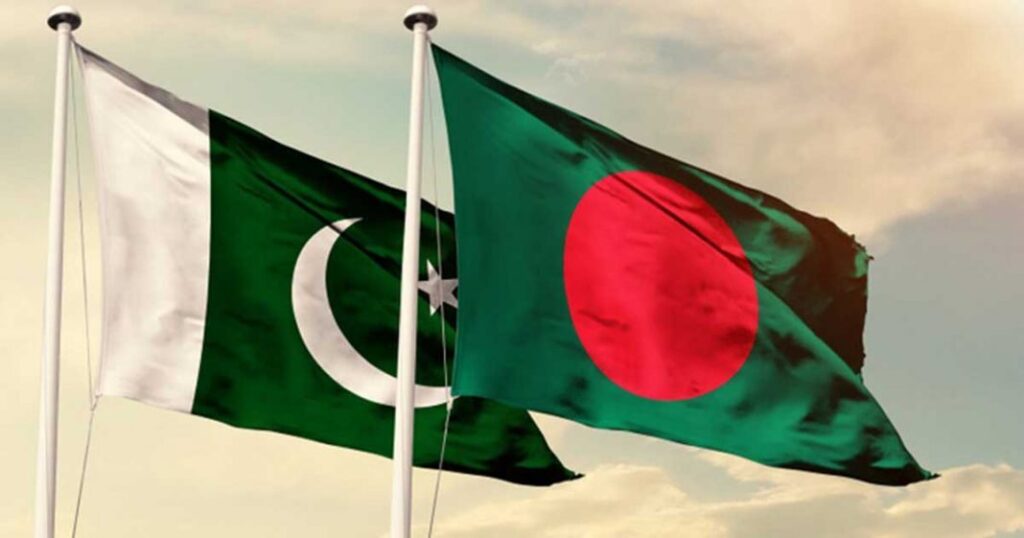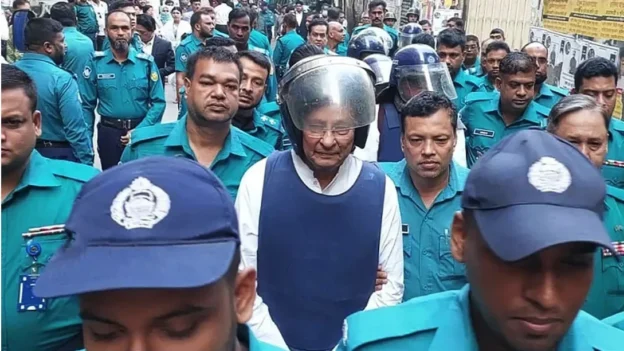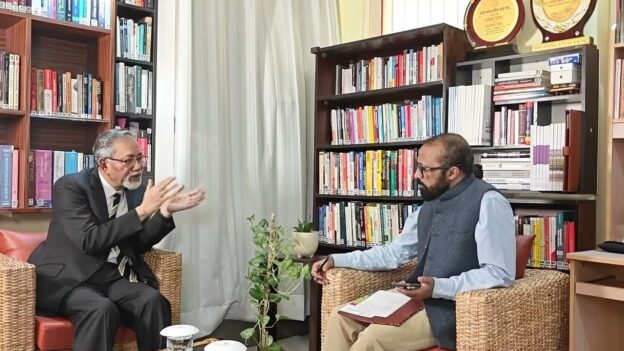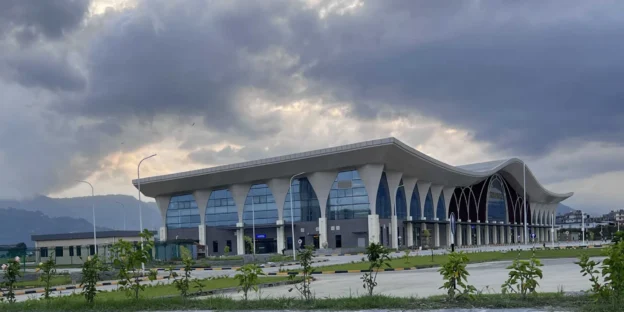The political landscape of South Asia is undergoing an elusive yet significant transformation. Following the ouster of the Sheikh Hasina–led Awami League (AL) government through a mass student uprising on August 5, 2024, Bangladesh’s foreign policy appears to be undergoing a dramatic shift — from proximity with India to renewed outreach toward Pakistan. Under the interim leadership of Chief Adviser Professor Muhammad Yunus, Dhaka has initiated a series of overtures toward Islamabad, a country with which it has shared a strained relationship since the 1971 Liberation War.
Recent high-level military interactions — including the visits of Pakistan’s Joint Chiefs of Staff Committee Chairman General Sahir Shamshad Mirza and, more recently, Lt Gen Tabassum Habib, Director-General of Joint Staff — mark a deliberate recalibration of Bangladesh’s strategic outlook. General Mirza is expected to remain in Bangladesh until October 28.
For Pakistan, this moment presents an opportunity to regain strategic ground in South Asia and rebrand itself as a moderate regional actor. For Bangladesh, it represents a complex balancing act between diversifying diplomatic relations and reopening deep historical wounds. For India, however, the emerging dynamic provokes both strategic anxiety and emotional unease.
Frequent high-level exchanges raise eyebrows
Since the fall of the Hasina government, senior Pakistani military officials have made multiple visits to Bangladesh over the past fifteen months. The most recent visit occurred in October 2025, when Lt Gen Tabassum Habib, Pakistan’s Director-General of Joint Staff, arrived in Dhaka for a four-day official trip. Hosted by Bangladesh’s Armed Forces Division (AFD), the visit represents the highest-level Pakistani military delegation to engage with Dhaka under the interim regime.
According to defence sources, Lt Gen Habib’s agenda includes discussions on military-to-military cooperation, defence training, and institutional linkages between the two armed forces. The AFD’s facilitation of the visit signals institutional endorsement from within Bangladesh’s defence establishment. In contrast, General Waker-Uz-Zaman, Bangladesh’s army chief, unexpectedly cancelled his scheduled visit to India (October 13–16), sending a lieutenant general in his place — a subtle but telling diplomatic signal.
Observers suggest that the frequency of such Pakistani military visits since August 2024 reflects a pattern of sustained defence diplomacy rather than symbolic gestures. Even more strikingly, several of these visits went unreported in Bangladeshi media, heightening suspicions of a quiet strategic realignment.
A new strategic opening for Dhaka and Islamabad
The Yunus-led interim government appears determined to “reset” its ties with Islamabad, seemingly willing to move beyond the historical trauma of 1971, when the Pakistani Army’s brutal campaign killed an estimated three million Bangladeshis. The revival of the long-defunct Joint Economic Commission (JEC), renewed discussions on connectivity and trade, and expanding defence-level engagements underscore Dhaka’s intent to diversify its diplomatic bandwidth away from India.
On Monday, Bangla daily Prothom Alo reported the convening of the 9th JEC meeting between Bangladesh and Pakistan — the first in two decades — held at the NEC Conference Room in Dhaka’s Sher-e-Bangla Nagar. Both sides agreed to enhance cooperation in trade, agriculture, IT, food, energy, pharmaceuticals, and connectivity. The last such meeting took place in 2005, and the revival of the platform after 20 years was hailed by both parties as a “remarkable development” in their economic relations.
For Islamabad, this is a golden opportunity born of Dhaka’s political uncertainty, economic fragility, and India’s cooling engagement. General Mirza’s visit — the first top-level Pakistani military presence in Bangladesh since 1971 — is thus both symbolic and strategic. Pakistan appears to be testing whether Dhaka can be nudged toward a more “balanced” regional posture, aligning more closely with Pakistan and China rather than India.
Defence diplomacy or strategic provocation?
Pakistan’s use of defence diplomacy — through training, joint exercises, and officer exchanges — has long served as a soft-power instrument for building influence in the Muslim world. In Bangladesh’s case, however, such engagements carry profound geopolitical implications.
Dhaka’s openness to these exchanges, at a time when Pakistan is reportedly considering the formation of a paramilitary force modelled after Iran’s Revolutionary Guards, has raised alarms in Indian security circles. Analysts warn that Pakistani trainers could influence ideological narratives within Bangladesh’s armed forces, potentially rekindling anti-India sentiment.
Adding to India’s unease are a series of new connectivity initiatives that signal deepening economic and logistical cooperation between Dhaka and Islamabad. A maritime shipping line between Karachi and Chittagong has already become operational, while discussions are underway to establish a direct Dhaka–Karachi air route. Simultaneously, Bangladesh has relaxed physical inspections of Pakistani imports — a move that, while intended to facilitate trade, has raised concerns in New Delhi about potential arms smuggling or intelligence infiltration through commercial channels. Taken together, these developments are viewed in India as strategic provocations that could gradually alter the region’s security and economic balance.
Collectively, these developments are viewed in New Delhi as strategic provocations that could destabilize the existing regional balance.
Economic rationale vs. political reality
Supporters of the Yunus government argue that this policy shift is economically pragmatic rather than ideological. With foreign reserves under strain, exports slowing, and IMF conditions tightening, Dhaka is seeking to broaden its economic partnerships. Pakistan, in turn, has extended symbolic gestures — scholarships for Bangladeshi students, offers of technical training, and proposals to boost trade.
Yet the economic reality remains sobering. Bilateral trade between Bangladesh and Pakistan stood at approximately $865 million in FY2025 — a six-year high representing a 20% increase. However, the balance remains heavily tilted in Pakistan’s favour, with over 90% of exports originating from Islamabad. Even the Karachi–Chittagong maritime route has seen limited traction due to high costs and logistical inefficiencies.
Thus, the so-called “reset” appears driven more by political optics than by tangible economic gains.
Implications for India: Strategic unease
For India, the warming ties between Islamabad and Dhaka represent more than a diplomatic inconvenience — they raise profound strategic concerns. With a 4,000 km porous border, any uptick in ISI-linked activity within Bangladesh could directly impact India’s northeastern security environment.
Amid these shifting dynamics, India’s apprehensions are wide-ranging and deeply intertwined. Foremost is the fear of intelligence and militancy spillover: frequent exchanges and relaxed visa regimes could provide covert channels for ISI-linked networks or extremist groups to expand their footprint along the porous Indo–Bangladesh border. The second concern relates to strategic encirclement — a possible Pakistan–Bangladesh–China alignment that could dilute India’s influence in the Bay of Bengal, especially if connectivity and port projects acquire dual-use military dimensions. Finally, New Delhi worries about economic and political instability within Bangladesh itself, where mounting unrest and financial distress could easily spill across borders, destabilizing India’s northeastern frontier and threatening the vulnerable Siliguri Corridor — the narrow “Chicken’s Neck” that links the region to mainland India.
Yunus’s gamble
For Professor Muhammad Yunus, rapprochement with Pakistan may form part of a broader attempt to assert foreign policy independence and bolster legitimacy during a volatile transitional phase. Yet this move risks alienating domestic sentiment deeply rooted in the trauma of the 1971 Liberation War. Veterans, business leaders, and political observers question whether Yunus has truly conducted the “cost-benefit analysis” he often advocates as an economist.
The potential “benefits” — diplomatic diversification and limited trade openings — remain speculative, while the “costs” — strategic distrust from India, domestic polarization, and the risk of radical infiltration — are immediate and measurable.
The road ahead
Bangladesh is fully entitled to pursue an independent foreign policy under any government. However, the timing, optics, and intensity of its engagement with Pakistan raise serious concerns.
While the Yunus administration may seek short-term leverage and global attention, overreliance on Pakistan risks entangling Dhaka in regional rivalries it is ill-equipped to navigate. For India, the challenge lies in responding with strategic patience — deepening economic ties, enhancing security cooperation, and strengthening cultural diplomacy — rather than pushing Bangladesh further into Islamabad or Beijing’s orbit.
Bangladesh’s rapprochement with Pakistan may be framed as pragmatic diplomacy in the current context, but it risks evolving into a strategic misstep. The pursuit of “diversification,” if not carefully calibrated, could erode trust, destabilize the regional balance, and invite new vulnerabilities.
For India, the prudent path forward lies not in confrontation but in constructive engagement, vigilance, and restraint — the essential tools for navigating a rapidly shifting South Asian geopolitical order.







